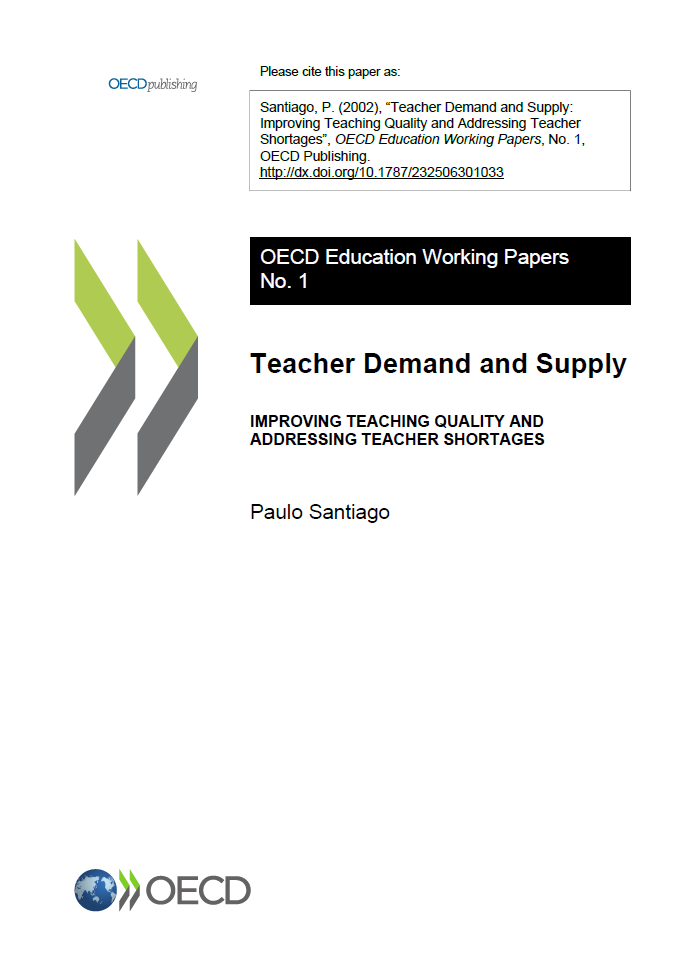Teacher Demand and Supply : Improving Teaching Quality and Addressing Teacher Shortages
Abstract
This paper provides an extensive review of the most relevant issues involved in the management of teacher demand and supply at the pre-tertiary level. First, it proposes a conceptual framework for distinguishing among, defining and relating the different relevant factors. Second, it identifies trends and policy concerns regarding the quality of the teaching workforce across the OECD area. Third, it provides an account of current empirical evidence on numerous aspects (e.g. class size, reward structure, working conditions, teacher education, certification procedures, organisation of schools, evaluation systems, structure of labour market, teaching and learning practices) impacting on the teaching profession. Some concerns about maintaining an adequate supply of good quality teachers emerge. It is the case that in a great number of countries the age profile of teachers is skewed towards the older end of the age-range and signs point to a recent worsening of the situation. In addition, the relative attractiveness of the profession, as far as the salary dimension is concerned, has declined substantially in the most recent years. Other evidence indicates that, at least in some countries, a substantial share of the teaching workforce does not hold a regular teaching license and the proportion of "out-of-field" teaching assignments is strikingly high in many subject key areas. It is also emphasised that a teacher shortage is difficult to measure and raises quality as well as quantity concerns. Given that teacher quality is a critical factor in determining student learning, it is entirely appropriate that the educational authorities in the countries with the greatest difficulties develop strategies to guarantee a sufficient supply of quality teachers. This report identifies a broad set of policies that should be given serious consideration to achieve that objective. Finally, this paper also sheds light on the current availability of data on teachers at OECD and relevant data needs for a future quantitative analysis.

